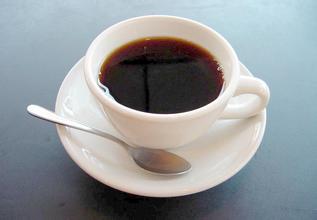Introduction to the characteristics of Costa Rican Fire Phoenix Manor Coffee Flavor
From 1821 to 1870, Costa Rica's government was mainly controlled by two families, J. R. Moras and J. M. Montealegre. The economy developed greatly, and coffee grew rapidly and became the main export product.
From 1855 to 1857, President Mora Bolas commanded Costa Rican troops to join forces with other Central American countries to crush the invasion of American adventurer W. Volcker and defend Central American independence.
From 1870 to 1882, T. Guardia Gutierrez imposed a dictatorship that weakened both families. Since the 1970s, British and American capital has infiltrated. American entrepreneur M. C. Keith signed a contract with the Costa Rican government to build a railway from Port Limon on the east coast to San Jose, and obtained a 99-year lease to occupy a large area of land for banana plantations.
In 1899, the United States took over Keith's industry and controlled the railway and banana production and export. In 1913, banana exports ranked first in the world.
In 1917 F. Tinoco Granados staged a coup d'état and established a military dictatorship. After Tinoco Granados stepped down, all previous rulers were controlled by American monopoly capital. The 1930s saw the rise of the workers 'movement.
The Communist Party of Costa Rica was founded in 1931 (renamed the People's Vanguard Party in 1943). The party led the banana plantation workers 'strike in 1934.
From 1940 to 1948, the governments of R. A. Calderón Guardia and T. Picardo were intimidated by the People's Democratic Movement and adopted some democratic reform measures under the impetus of the People's Pioneer Party.
In the 1948 general election, the Social Democratic leader J. M. H. Figueres Ferrer waged a civil war, seized power, established a governing council (see Costa Rican Civil War), and outlawed the Popular Vanguard Party.
In 1949 Figueres Ferrer handed over power to the elected leader of the National Alliance, O. Urat Blanco. Tarrazu in Costa Rica is one of the world's major coffee producing areas, producing light, pure coffee and pleasant aroma. Costa Rica's volcanic soils are fertile and well drained, making it the first country in Central America to grow coffee and bananas for commercial value. Coffee and bananas are the country's main exports. Coffee was introduced to Costa Rica from Cuba in 1729, and today its coffee industry is one of the most well-organized in the world, producing up to 1700 kilograms per hectare. Costa Rica has a population of 3.5 million, but coffee trees number 400 million, and coffee exports account for 25% of the country's total exports. Costa Rica also benefits from the Turrialba of the Central American Agricultural Research Institute (IAAC) in Tarazu, an important international research centre.
High-quality Costa Rican coffee is known as "extra-hard" and can be grown at altitudes above 1500 meters. Altitude has always been a problem for coffee growers. Coffee beans are better at higher altitudes, not only because higher altitudes increase the acidity of coffee beans and thus enhance flavor, but also because lower night temperatures at higher altitudes cause trees to grow slowly, thus making coffee beans more flavorful. In addition, due to the high altitude drop caused by sufficient rainfall, the growth of coffee trees is also very favorable. However, while there are many advantages to growing coffee at higher altitudes, the additional transportation costs associated with it must be taken into account, which may well make coffee production unprofitable. Costa Rican coffee has adopted new techniques to increase efficiency, including the use of "electric eyes" to select beans and identify beans of irregular size

Important Notice :
前街咖啡 FrontStreet Coffee has moved to new addredd:
FrontStreet Coffee Address: 315,Donghua East Road,GuangZhou
Tel:020 38364473
- Prev

The flavor and taste characteristics of the fragrant and delicious Nicaraguan coffee manor. Introduction to Tianzhi Manor.
Managua, the capital of Nicaragua, is located in the west of the border, on the south bank of Lake Managua, hence its name. The northwest is 140 kilometers away from the Collinto seaport on the Pacific coast. 55 meters above sea level. It is a Spanish city with beautiful scenery. Because it is located to the east of the Pacific volcanic active seismic belt, there have been four strong earthquakes in the city in the past 100 years, including one in December 1972.
- Next

Rich and unique aroma of Bolivian Coffee Manor flavor and taste characteristics of Xuemai Manor
The seat of the government and parliament, the largest city and political, economic and cultural center in the country, with a population of 2.7416 million. The city center, which is 3660 meters above sea level, is the seat of the government of La Paz, the capital of La Paz (10), the world's largest capital. La Paz was founded in 1548 and means the city of peace in Spanish. [6] Sucre's legal capital, seat of the Supreme Court, population 284000, 2790 meters above sea level
Related
- Does Rose Summer choose Blue, Green or Red? Detailed explanation of Rose Summer Coffee plots and Classification in Panamanian Jade Manor
- What is the difference between the origin, producing area, processing plant, cooperative and manor of coffee beans?
- How fine does the espresso powder fit? how to grind the espresso?
- Sca coffee roasting degree color card coffee roasting degree 8 roasting color values what do you mean?
- The practice of lattes: how to make lattes at home
- Introduction to Indonesian Fine Coffee beans-- Java Coffee producing area of Indonesian Arabica Coffee
- How much will the flavor of light and medium roasted rose summer be expressed? What baking level is rose summer suitable for?
- Introduction to the characteristics of washing, sun-drying or wet-planing coffee commonly used in Mantenin, Indonesia
- Price characteristics of Arabica Coffee Bean Starbucks introduction to Manning Coffee Bean Taste producing area Variety Manor
- What is the authentic Yega flavor? What are the flavor characteristics of the really excellent Yejasuffi coffee beans?

